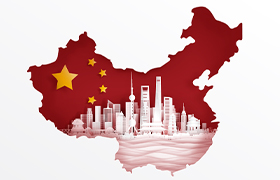
Measuring ROI from Supplier Relationship Management Program


Almost 80 percent of the organizations including Best-in-Class organizations that have high level of procurement maturity would face challenges in obtaining commitment and funding for their Supplier Relationship Management (SRM) program. This is mainly because Procurement teams are always challenged to showcase the financial benefits out of the SRM program. Building a business case and justifying investment in SRM to the CPO involves a lot of effort from the Procurement and SRM teams and therefore it is often ignored. To gain buy-in from the top management for investment in SRM, it is critical to show a positive ROI and to achieve this, it is important to involve the Finance team to support in defining the impact of SRM on the company's financial statements.
This paper discusses how to calculate and build a business case to showcase ROI from SRM program. It also provides some benchmarks which can be used as a reference while estimating ROI from SRM for an organization.
Introduction
In many organizations, SRM is among one of the top 10 CPO priorities. However, the steps taken, and areas covered within SRM does not fully meet organization's goals; and that’s because thus far the major focus for SRM has only been risk mitigation, performance, and compliance management. Supplier partnership, collaboration, and development are areas which are not commonly emphasized in the SRM program as it is hard to measure the benefits. Below are some strategies on how to build a business case for all areas or processes within SRM, success factors and benchmarks.
Building a Business Case to showcase ROI from SRM program
The ROI or value derived from robust SRM includes incremental gains because of investment in SRM technology, people, and time with suppliers. If the goals of the SRM program is focused on cost savings, estimated ROI should be calculated with the help of Finance teams who can build a hard dollar case for the SRM program. However, Finance team's involvement may not always be warranted if the SRM program is focused on objectives such as risk reduction and value maximization.
Organizations can realize 9X -11X ROI by following the strategies given below.
|
Challenge |
SRM Value Driver |
Strategy |
Benefits |
|
Procurement Team dedicates more than 50 percent of time on operational tasks like manual supplier on-boarding, query handling etc. |
Automation of Supplier Information collection via Supplier Information management tool |
Supplier self- registration via Supplier portal. Automated data gathering via pre-built registration form |
About 50 percent FTE Cost savings due to reduced manual work |
|
Organization exposed to high supplier risk due to poor risk tracking |
AI enabled Supplier risk monitoring tool |
Real-time risk monitoring ensures risk reduction and helps in proactive risk mitigation planning |
About 60 percent reduction in risk incidents which impacts material supply and service |
|
Supplier performance issues affecting organization’s business operations |
Centralized Supplier performance management tool |
Reviewing supplier performance on a quarterly basis adopting 360 degrees approach (multiple stakeholder evaluation) |
Reduces risk of supplier failure by 30 percent |
|
Supplier Non-compliance to industry’s sustainability requirements |
Integrate Sustainability and CSR in SRM program |
Ensuring supplier’s compliance to organization’s sustainability standards through periodic audits |
High level of organization and supplier’s sustainability compliance can increase overall brand value of the organization |
|
Suppliers suggest very few innovative solutions |
Building transparent relationships based on trust by sharing organization needs and objectives and leading supplier led innovation initiatives |
Collaboration with strategic suppliers for innovative ideas, strategic planning, product roadmaps, and investments to remain competitive |
|
|
Inconsistent SRM process across the organization |
Standardize the SRM process |
Devise a Best-in-Class SRM process for various types of suppliers and ensure process compliance across business units |
Organizations standardize SRM program and focus on minimum 90 percent of suppliers. Realize 30-35 percent more value compared to others that focus only on strategic suppliers |
SRM program performance benchmarking
According to Vantage Partner’s survey results, it has been observed that high levels of SRM investments have been correlated with greater ROI.
|
Metrics |
Description |
Average Performer |
Best-in-Class |
|
Average Investments for SRM Program to-date |
Average Investment in SRM relative to other procurement and supply management investments to-date |
$61 million |
$554 million |
|
Average Investments for SRM program in the last year |
SRM investments made in the last year |
$17 Million |
$25 million |
|
Average value/ ROI realized from SRM investments in the last year |
Value realized from SRM investments |
$34 million (Approximately 1X) |
$304 Million (Approximately 11X) |
|
Allocation of SRM investments
|
SRM Software tools |
63 percent |
14 percent |
|
Increasing number of people and amount of time spent on SRM |
20 percent |
60 percent |
|
|
Individual SRM skill development (training, coaching) |
10 percent |
10 percent |
|
|
Defining and utilizing formal SRM governance mechanisms & business processes |
7 percent |
16 percent |
Source: Vantage Partners. The SRM program benchmarking study was conducted by Vantage Partners in 2019 which involved around 950 respondents representing more than 500 companies from all industries. Majority of the companies belonged to the revenue group between $1 billion to $10 billion.
Strategies for Success
Getting buy in from suppliers and all relevant teams in the organization is most important. All the strategies given below can help in achieving the expected/ estimated ROI from SRM program in an indirect way. Moving a company to play a more strategic role in managing suppliers requires change management and a shift in perspective both internally and on the part of the supplier.
|
Success Factors |
Strategies |
|
Clear Vision |
|
|
Sufficient investments |
|
|
Establishing a common understanding between Category and SRM teams |
|
|
Increase supply base coverage for SRM program |
|
|
Common understanding |
|
|
Supplier Partnerships |
|
|
Relationship investment |
|
|
Avoid over emphasis on Cost reduction |
|
Conclusion
Organizations should look for realistic returns and sustainable benefits. Organizations cannot expect to see returns from SRM immediately within 12- 24 months. The actual returns from SRM can be expected over 3-5 years’ time period and sometimes even beyond. SRM needs an organization-wide cultural change towards expectation of long-term joint working and strategic gain. This must be explained very clearly to the top management while presenting the business case.
References
https://www.pwc.nl/nl/assets/documents/pwc-supplier-relationship-management.pdf
https://blog.stateofflux.co.uk/blog/ten-critical-success-factors-to-secure-srm-value-and-roi
Related Insights:
View All
Get more stories like this
Subscirbe for more news,updates and insights from Beroe






